Flooring is one of the most visible and stressed elements of a property. Whether for aesthetic or comfort reasons, replacing flooring is a common project in residential renovation.
On this page, you will find for refinishing floors in QuebecWe’ll give you a complete breakdown of your costs, based on the material you choose, the installation method, related costs such as demolition or levelling, and a comparison of the most popular coatings. Plus, get 3 free quotes from qualified contractors in your area.
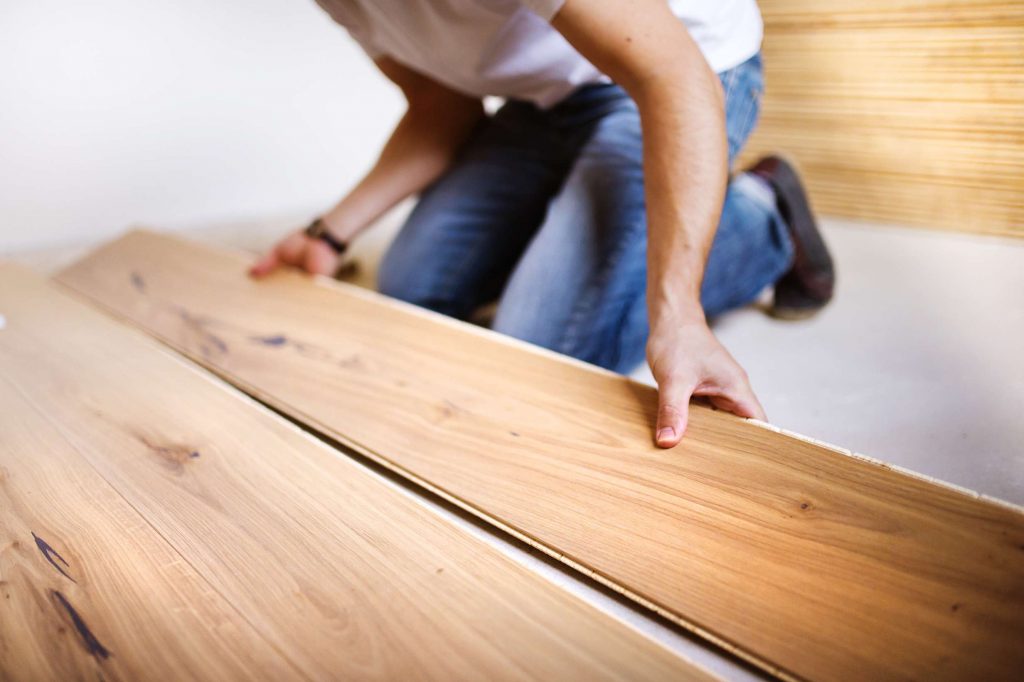
Table of contents
Why refinish a floor?
Changing your floor isn’t just a way of rejuvenating your décor: it’s also an investment in the comfort and durability of your home.
Here are the main reasons to renovate a floor:
- Damaged or worn flooring scratches, swelling, loose boards
- Aesthetic modernization : change style or harmonize materials
- Adding value A well-renovated house sells better
Thermal and acoustic comfort : especially with floating floors or membranes
Price chart - the floor renovation rates you need to know in 2025!
Renovating or replacing floor coverings is an expensive process.
But when it comes to floor renovation, there’s something for every budget! From economical budgets to high-end options, don’t worry: you’ll be able to find a floor within your means if you take the time to compare prices.
Soumissions Plancher proves it to you right here – Check out our price chart for floor renovations in Quebec in 2025!
Floor model | Floor price |
Floating floor | Starting at $1.99 / square foot |
Hardwood flooring | 7 to $15 / square foot |
Ceramic flooring | 2.50 to $8.50 / square foot |
Vinyl flooring | 2 to $6 / square foot |
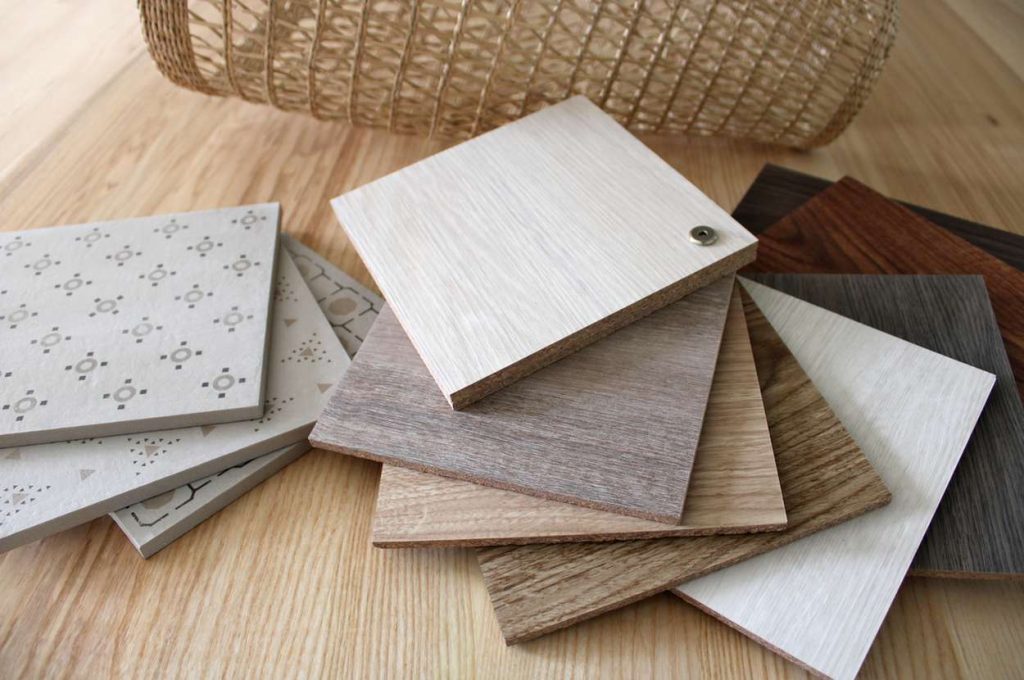
All detailed costs for installing your floor
Here is a detailed overview of average prices for different types of flooring:
| Floors | Material prices | Installation price |
|---|---|---|
| Hardwood | Between $2 and $15 per square foot, depending on the type of wood (traditional or exotic). | Approximately $2.50 per square foot for nail-down flooring. |
| Floating (laminate) | Between $1.50 and $8.50 per square foot. | From $1.50 to $3 per square foot. |
| Vinyl | From $2 to $6 per square foot. | Less than $2 per square foot. |
| Ceramics | Between $2.50 and $8.50 per square foot. | From $4 to $5.50 per square foot. |
| Engineered wood | Between $3 and $11 per square foot. | Costs vary depending on the professional. |
| Liège | From $2.50 to $6 per square foot for tiles, and from $9 to $11 per square foot for floating floor coverings. | About $2 per square foot. |
| Bamboo | From $4 to $14 per square foot. | Costs vary depending on the professional. |
| Linoleum | From $2.50 to $6 per square foot for rolls, and from $6 per square foot for tiles. | From $0.60 to $1.50 per square foot. |
Additional costs for installing your floor
When renovating a floor, there are several additional costs to consider in addition to materials and installation. Here’s a list of items to consider when drawing up a complete budget:
Soil preparation :
Demolition and removal of old cladding | Hardwood, floating or vinyl | 1 to $2 per square foot. |
Ceramic or concrete | Up to $5 per square foot. | |
Debris removal | Container rental fees ($200 to $500). | |
Ground levelling | Application of a levelling or patching compound | 2 to $5 per square foot, depending on soil conditions. |
Subfloor :
Subfloor installation or replacement | Plywood | 1.50 to $3 per square foot. |
Soundproofing or damp-proofing membrane | 0.50 to $2 per square foot. | |
Ground levelling | Application of a levelling or patching compound | 2 to $5 per square foot, depending on soil conditions. |
Related work :
Mouldings and baseboards | Materials | 1 to $6 per linear foot. |
Installation | 2 to $5 per linear foot. | |
Thresholds and transitions | Between different rooms or floor types | 10 to $50 per threshold (materials and installation). |
Finishing and maintenance | Sanding and varnishing (hardwood) | 2 to $4 per square foot. |
Treatment or sealing (ceramic, concrete, etc.) | 1 to $3 per square foot. |
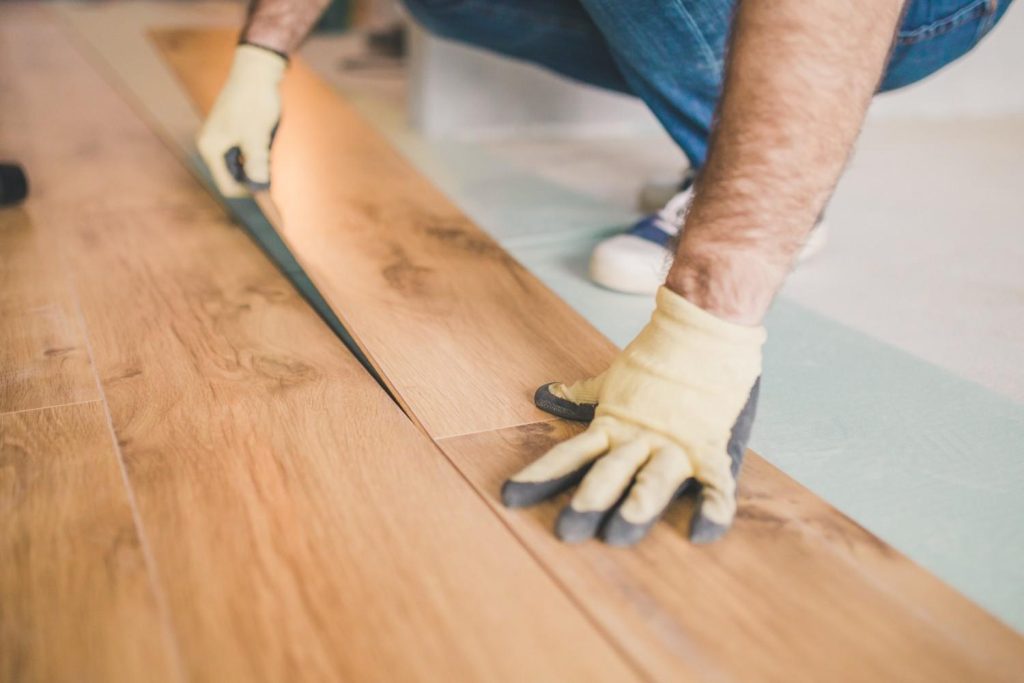
How long do different types of flooring last?
Before making a choice, it’s a good idea to know the longevity of materials based on their resistance to wear, moisture and impact.
Here’s an overview of the average lifespan of different types of flooring:
| Floors | Service life |
|---|---|
| Hardwood | 25 to 100 years. |
| Floating (laminate) | 10 to 25 years old. |
| Vinyl | 15 to 25 years old. |
| Ceramics | 50 to 100 years. |
| Engineered wood | 20 to 40 years old. |
| Liège | 10 to 25 years old. |
| Bamboo | 20 to 50 years old. |
| Linoleum | 20 to 40 years old. |
What factors influence the price of a floor?
There are several factors that can raise or lower the total cost of a project:
- Type of material (entry-level vs. high-end)
- Installation method (glued, nailed, floating, dry…)
- Area to be covered
- Condition of existing floor
- Accessibility
- Associated work (sills, baseboards, membrane)
Why choose hardwood flooring for your renovation?
Hardwood is a flooring material that has been used in homes since the dawn of time.
It’s hard to find a material with such durability, which is why it’s one of the most popular choices for home builders and renovators.
The benefits of hardwood flooring you need to know!
- High durability
- Excellent value for money
- Can be sanded and varnished
- Increases the value of your home
All the disadvantages of hardwood flooring in Quebec!
- Requires specialized (and complex) installation
- Expensive prices
- Scratches over time
- Not suitable for damp rooms (kitchen and bathroom)
Are all types of hardwood equally durable?
No, you have a choice of hardwood species for your floor covering! Yellow birch is a popular option, offering average strength, while higher-end, more expensive wood options such as maple or oak will last longer.
There are tons of hardwood species, colors, textures and finishes to choose from. And that’s precisely why you need to compare quotes from flooring contractors!
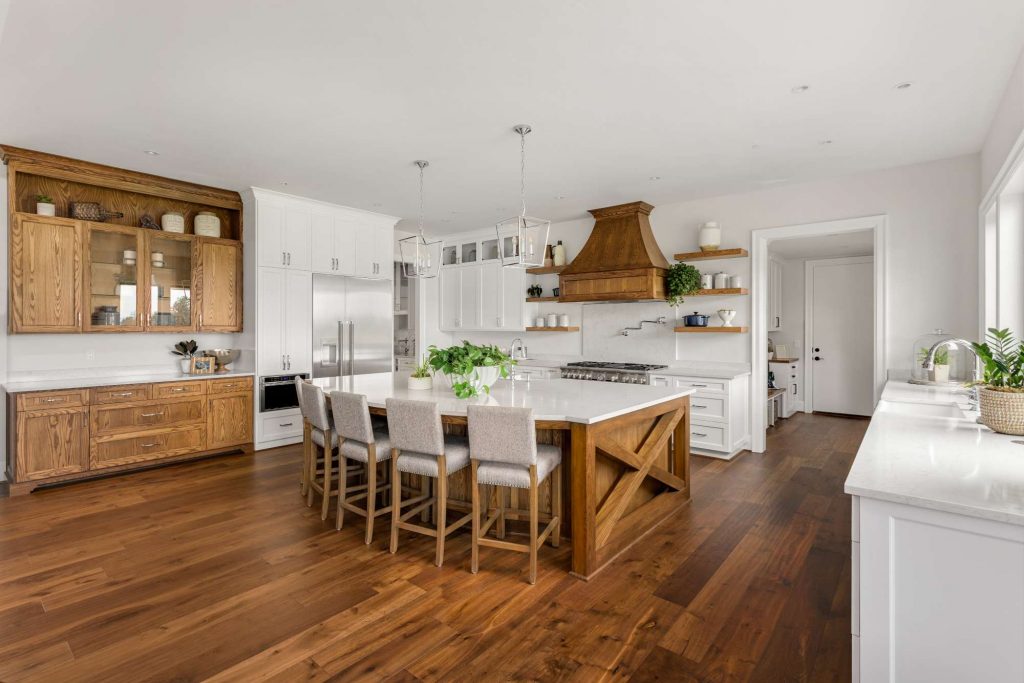
Which floor covering is right for you?
Here are a few tips to help you make the right choice for the room you want to renovate:
- Kitchen / bathroom ceramic, vinyl, engineered wood
- Basement Vinyl, epoxy, cork
- Living room / bedroom hardwood, floating
Entrance / lobby ceramic, vinyl, treated concrete
The pros and cons of floating floors!
Floating floors have long been considered an economical – and sometimes even “low-end” – solution.
While some of these claims were once true, those days are gone. Although floating floors are still of lower quality than hardwood, flooring technologies have improved, offering a more resistant floating floor with a more realistic finish.
But what is “floating” floor covering?
A floor covering that attempts to imitate wood, but whose body is made of wood fiber. The outside of the floor is covered with laminate, giving the board its finished look. Since the early days of floating floors, this type of flooring has greatly improved.
Floating floors come with a number of significant advantages!
- Economical option
- Wide price range
- Many colors and finishes to choose from
- For large-area coverage
But be careful! Floating floors are far from flawless!
- Float quality is variable
- Floating resists moisture poorly
- Floating panels cannot be installed in bathrooms
- Floating board joints tend to peel off
Before choosing a floating floor, you should know that this type of floor covering cannot be installed in a kitchen, bathroom or any other wet room. The reason is that floating floors react very badly to water! Even minor water damage can cause boards to buckle and ruin the floor.
What is engineered wood flooring?
Engineered wood flooring is a high-end covering. There’s no denying it, and you can tell just by looking at the price of such a floor covering.
What you need to know about engineered wood is that it consists of a wood plywood core and a hardwood surface. This structure makes engineered wood stronger than standard hardwood – and more expensive.
And why is it worth choosing engineered wood? All the advantages!
- Economical option
- Wide price range
- Many colors and finishes to choose from
- For large-area coverage
Are there any drawbacks to engineered wood that you should be aware of?
The high price and complex installation of engineered wood are the two drawbacks you need to be aware of with this type of floor covering. However, because engineered wood is more resistant to moisture than hardwood and floating wood, it offers greater durability when installed in a kitchen or basement.
If you insist on wood-look flooring for these rooms, engineered wood flooring is your best bet.
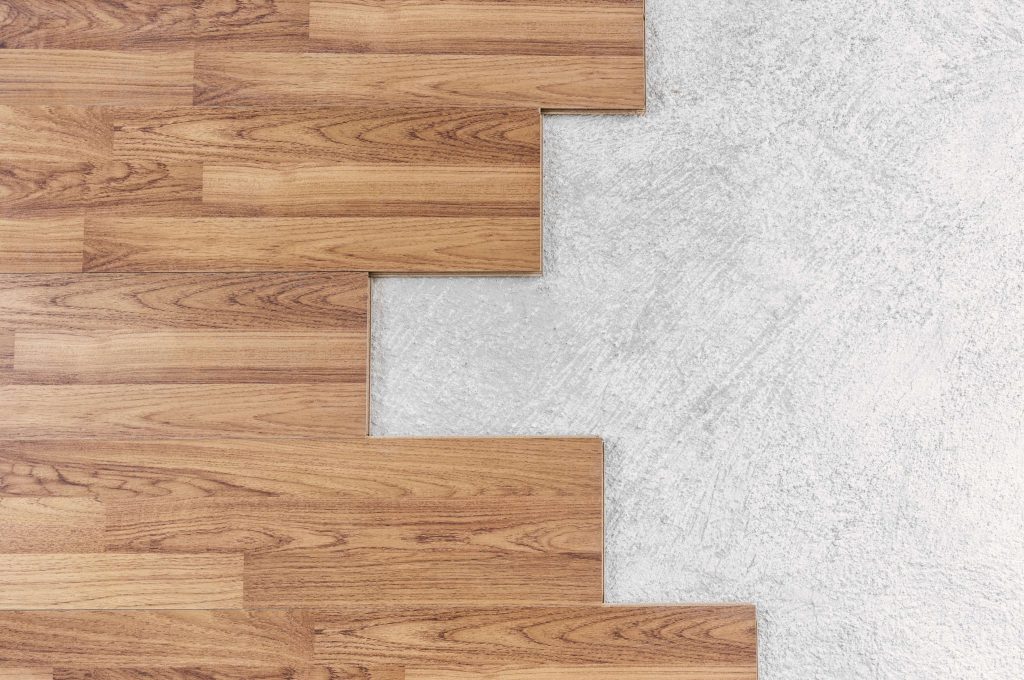
Everything you need to know about ceramic flooring!
Ceramic has been a fixture in Quebec homes for ages.
And one thing is certain about ceramics – it’s not about to go out of fashion! Ceramic’s main advantage is its impermeability and resistance to water. Ceramic flooring can be installed in any room of the house without any problems.
We thought we’d give you a few advantages and disadvantages of ceramic flooring!
- Waterproof floor covering
- Extremely moisture-resistant
- Multiple choice of colors and finishes
- Can be installed in any room
- Extremely durable product
Beware! Of all floor coverings, ceramic is the most variable in price!
In fact, it’s possible to find a ceramic floor covering at $2 per square foot, just as you can find one at $15 per square foot. If you’re considering ceramic, be sure to compare products and options carefully.
Epoxy concrete flooring: an overpriced option?
For which floor surfaces is epoxy best suited? Such a floor covering involves spreading an epoxy-based product over the concrete surface to give your concrete floor a glossy, finished look. Such a product can be installed on both house and garage floors without any problem.
Epoxy is an expensive, high-end option!
For an average epoxy floor, you can expect to pay around $10 per square foot, and a specialist is required to do the work. The price of epoxy rises quickly, which is why it’s considered a high-end option.
Since epoxy is a treatment applied to a concrete floor, it’s an option reserved for basements, slab houses or garage floors. Unless, of course, you’ve poured a concrete slab on the upper floor of your home, which is uncommon and expensive.
Terrazzo - a floor covering that's making a comeback!
What is a Terrazzo floor? Terrazzo is a floor covering that has been used for decades. It has long been used in public buildings such as schools and hospitals.
Forgotten for many years, Terrazzo is making a comeback, this time in residential properties!
Why choose Terrazzo and in which rooms should you install it?
- Terrazzo is waterproof
- Terrazzo is moisture-resistant
- Terrazzo is extremely sturdy
- Terrazzo is ideal for bathrooms
Looking for solid flooring for your basement? Terrazzo will be hard to beat, you can be sure of that! Its resistance to moisture, cold and water makes Terrazzo an ideal surface for your basement.
Electric or hydronic underfloor heating: make sure you choose the right covering!
Underfloor heating is not a type of floor covering, but it does influence the type of covering you CAN install!
How does underfloor heating affect your choice of floor covering?
Underfloor heating, whether electric or hydronic, must be covered with a floor covering capable of conducting heat. More importantly, this floor covering must be able to receive the heat without damaging itself.
Here are ALL the floor coverings you can install with underfloor heating!
- Ceramics
- Concrete / epoxy
- Engineered wood
- Natural stone
Why are floating floors and hardwood not good options for underfloor heating?
Because heat from the floor will dry them out, make them crack and damage them prematurely. And worst of all, these two coatings will prevent your underfloor heating system from working optimally.
Radiant heating systems (underfloor heating) | Electric | 6 to $10 per square foot. |
Hydronic (hot water) | 8 to $15 per square foot. | |
Integrated lighting | Glass underfloor or other designs | Costs customized to the project. |
Will it be necessary to replace the subfloor as well?
What is a subfloor and why is it essential?
The subfloor is the plywood structure on which your floor covering rests. This wooden structure must be solid and stable to ensure that your new floor is resistant and, above all, that it doesn’t crack.
When is it time to replace the subfloor?
When the plywood is damaged, cracked, rotten or has come loose from the joists, it may be necessary to replace it. This will cost money, but it will ensure the stability of the floor covering.
Replacing the subfloor is very expensive!
Be sure to seek the advice of an experienced contractor before proceeding with work as major as subfloor replacement.
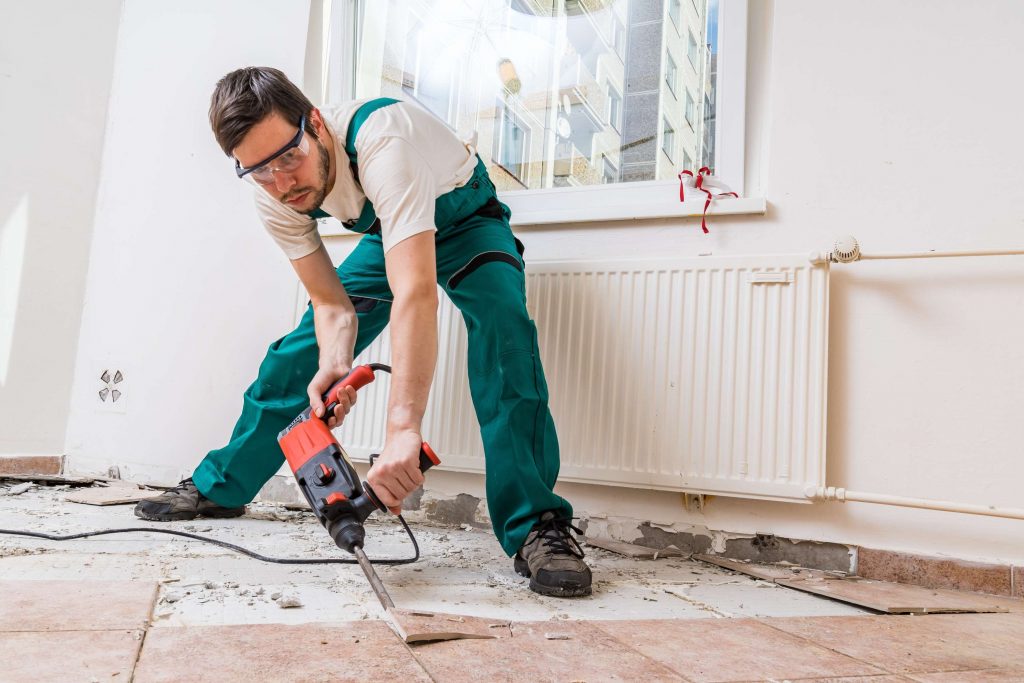
Compare 3 quotes for your floor renovation
Before starting any work, compare bids from several contractors. With Soumissions Plancher, you’ll receive :
- 3 free personalized quotes
- Fast response times
- A no-obligation service
It’s simple, free and helps you save money.




